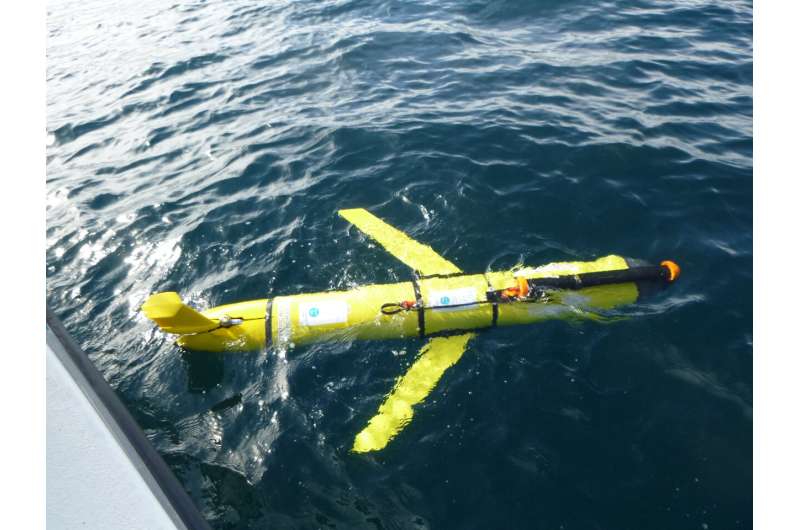This article has been reviewed according to Science X's editorial process and policies. Editors have highlighted the following attributes while ensuring the content's credibility:
fact-checked
trusted source
proofread
A new model to monitor Atlantic salmon farming in Tasmania's Storm Bay

Fisheries Research & Development Corporation (FRDC) has today released an independently reviewed report (2017-215) presenting a modeling and information system for water quality conditions in Tasmania's Storm Bay.
The research undertaken by CSIRO, Australia's national science agency, has developed a new coastal water quality model, to assist informed decision-making based on accurate and timely information.
The model presented in the Storm Bay Modeling and Information System report, simulates the seawater circulation and nutrient dynamics of the Storm Bay area, including inputs from rivers, wastewater and salmon farm discharge and interactions with offshore ocean water.
The modeling system was developed using a "digital twin" approach; i.e., a virtual model of a physical object or in this instance, the coastal waters off southeast Tasmania. The model predicts the observed circulation and water quality in coastal waters over multiple years and can be used to explore future scenarios with various levels of salmon farming.
FRDC Managing Director Dr. Patrick Hone said the model provides a high-quality scientific tool to help better understand what might happen in Storm Bay under different conditions in the future.
"This model provides information for the best practice management of Atlantic salmon farming in this area, and it also delivers detailed insight into potential changes to the coastal ecosystem in the future.
"As the Tasmanian salmon sector continues to innovate and develop, tools such as this provide invaluable insight into what we might expect under different conditions and allow us to understand the possible effects of potential changes to farming loads in the future," said Dr. Hone.
Calibrated using observations from a previous project, this new model can accurately simulate local currents and water circulation, nutrient cycling, plankton and dissolved oxygen. To confirm the accuracy of the model, new continuous data were collected from moored water quality sensors placed on the bottom and surface of Storm Bay waters for extended periods. Profiling autonomous underwater vehicles, were also used to collect water quality observations throughout Storm Bay and in the open ocean, including one trip from Macquarie Harbor on the west coast of Tasmania.
Simulated circulation, water quality and analysis products from the new model are available on the CSIRO website. This data and analysis provides a much-improved understanding of the whole marine environment within Storm Bay. The project final report is available on the FRDC website.
Lead researcher from CSIRO Dr. Karen Wild-Allen, said the project provided new understanding of the key drivers of water quality in Storm Bay.
"The Storm Bay model has shown that water quality in the area is strongly influenced by inflow of offshore ocean water that contributes considerable seasonal and interannual variability to the system."
"A better understanding of all drivers of water quality will equip fish farmers and resource managers with knowledge to underpin their strategic and tactical decisions."
Provided by CSIRO




















